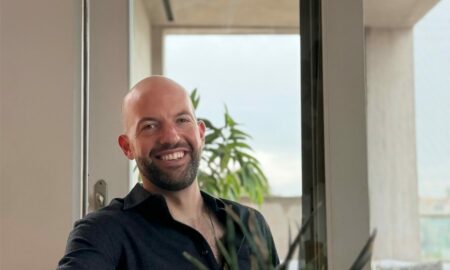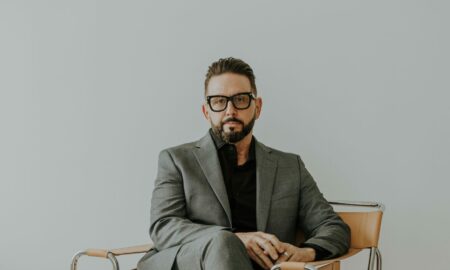

Today we’d like to introduce you to Shannon Kalberg.
Thanks for sharing your story with us Shannon. So, let’s start at the beginning and we can move on from there.
From a young age, I was fascinated with how the human brain worked. My younger brother, Kevin, was diagnosed with autism at four years old. His brain worked in a very different way than mine and I was amazed at his ability to recall numbers and memories with vivid details. My family found whatever resources were available at the time, however, they struggled with uncertainty for my brother’s future. Looking back now, my parents described how isolating and lonely it was to navigate my brother’s care, find credible resources for him, and have an idea of what his future might look like. Due to these early emotional and formative experiences, I wanted to learn more about learning processes and how to provide emotional support for families.
While in graduate school at Pepperdine University, I focused my studies on how we translate emotions from our brain and bodies into language and communication. This led me to my specializations in neurodiversity, trauma, and anxiety management.
Great, so let’s dig a little deeper into the story – has it been an easy path overall and if not, what were the challenges you’ve had to overcome?
For the most part, I have been incredibly lucky to have such a great community. After I started my own business last year, I was blown away by all the support I received from my colleagues, alumni group, and former supervisors. My family, husband, and friends also listened to me endlessly worry about start-up costs and how to generate referrals.
Starting out as a woman in business, I was surprised at how little I knew about managing finances and how scary it was to confront my attitudes about money. Everyone has their own unique “money story” that has developed from their early childhood experiences. I was completely avoidant of my own money story in the beginning and had to confront it in order to move forward. I found a kickass accountant who whipped me into shape and taught me how to start thinking like a business owner. As a therapist, we are told in school that we will help many people and aren’t in the profession to make money. This simply isn’t true and I am annoyed that many helping professionals continue to hear this message.
We’d love to hear more about your work and what you are currently focused on. What else should we know?
My practice caseload includes adults, teens, families, and children. As a marriage and family therapist (LMFT), I was trained to pretty much expect anything and everything to walk through my door. My specializations include neurodiversity, trauma (EMDR), and anxiety management. A large majority of my clients are professionals in the entertainment and creative industries.
Individuals in these industries tend to be very different from the typical 9-5 workforce. They are incredibly dynamic and have the opportunity to face unique experiences such as creative blocks, vicarious trauma through their art mediums, emotional and creative breakthroughs, and issues with professional and personal identity formation – just to name a few.
Many of my creative clients have been diagnosed with Attention Deficit Hyperactivity Disorder (ADHD) and have spent their childhoods struggling in traditional classrooms. They describe how liberating and freeing it is to find a profession that allows them to form their own workflow, professional environment, and grant them flexibility. They are no longer constrained by oppressive or rigid rules that stifle their creativity. This is why it’s so important to promote neurodiversity, which is defined as a concept where neurological differences are to be recognized and respected as any other human variation.
These differences can include those diagnosed with Attention Deficit Hyperactivity Disorder (ADHD), Autistic Spectrum Disorder (ASD), Tourette’s Syndrome, and several others. I am honored to be a part of this social movement which advocates for viewing these differences as a variation of human wiring rather than a disease. As an activist, I reject the idea that these differences should be “cured” and instead, they should be celebrated as unique forms of communication and self-expression.
Another specialty of mine is utilizing Eye Movement Desensitization and Reprocessing (EMDR) which is an extremely effective, evidence-based treatment, that targets symptoms of trauma and post-traumatic stress disorder (PTSD). It was originally developed to help soldiers who suffered from “shell shock” and has been a widely recognized treatment modality with veterans.
EMDR uses a combination of therapy techniques that draw from neuroscience, cognitive behavioral therapy (CBT), and mindfulness. With the use of bilateral stimulation (eye movements, hand-tapping, or tactile sensors.), EMDR appears to unlock the nervous system and allow the brain to reprocess disturbing memories. The dual focus – being in the present moment while calling up the disturbing memory – facilitates the brain in moving the disturbance from emotion intense areas of the brain to cognitive areas where it can be recalled with a much-decreased level of disturbance.
In laymen’s terms, EMDR takes the “emotional charge” out of traumatic memories and has been proven to decrease PTSD or trauma-related symptoms.
Do you look back particularly fondly on any memories from childhood?
I have to say that my two favorite childhood memories include times when I was resistant as a child but as an adult, I am touched at how wonderful they were.
The first one was when my father would sit me down after dinner and help me complete a puzzle of the United States that had all the capitals listed on it. I felt like such a champ in fifth grade when I completed my US capitals quiz in under five minutes!
The second is when my mother took me the doctor almost every week to get allergy shots. I was allergic to almost EVERY plant and pollen in my hometown so these shots were crucial. After I got the shot, my mother would take me to the hospital cafe and buy me a cookie or treat for being so brave.
Pricing:
- Individual Therapy – $175
- EMDR Sessions – $200
- In-Home Therapy – $200-$250
- FREE 15-Minute Phone Consultation
Contact Info:
- Address: 1150 Yale Street, Suite 3
Santa Monica, CA 90403 - Website: www.shannonkalberg.com
- Phone: 310-592-4980
- Email: [email protected]
- Instagram: @shannonkalberglmft
- Facebook: https://www.facebook.com/shannon.kalberg?ref=bookmarks




Image Credit:
Nick Micale
Getting in touch: VoyageLA is built on recommendations from the community; it’s how we uncover hidden gems, so if you know someone who deserves recognition please let us know here.




















